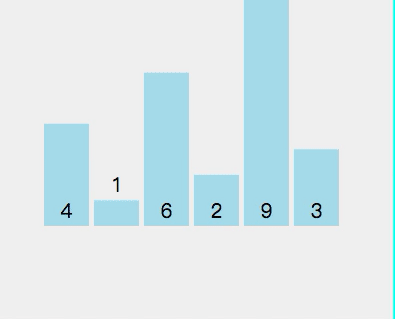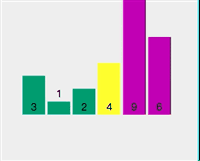 Java
Java
 JavaInterview questions
JavaInterview questions
 Meituan interview: Please handwrite a quick schedule, I was shocked!
Meituan interview: Please handwrite a quick schedule, I was shocked!
Meituan interview: Please handwrite a quick schedule, I was shocked!
Today, this question was asked by the interviewer to quickly arrange it by handwriting on the spot. The scene is as follows:
Interviewer: Let’s continue chatting. Regarding data structures and algorithms, can you write a quick sort? (While speaking, he turned my resume over and handed me a pen, meaning he asked me to write on the back of my resume)
Rookie Me: What do you mean? Write it here? (Pointing to the resume)
Interviewer: Yeah
Rookie Me: No
Interviewer: Okay, that’s all for today’s interview
Rookie Me: (I’m very angry. It’s a labor-management resume. Do you want to write code on the labor-management resume?) Shadiao
Interviewer: (Looking back, confused)
Thinking about it, I was still too young, but that wouldn't be the case now. Just write, it’s just a piece of paper anyway. 
Actually, quick queuing is simple, but I guess many people can’t write it by hand. Is it difficult? There are many people who can write it by hand on the spot in several ways.
I am a newbie, but I can still write by hand. After all, I just deliberately prepared "dictate writing" before the interview.
Next, we will analyze and analyze ---- quick sort.
Background
From encyclopedia:
Quick sort was proposed by C. A. R. Hoare in 1962. Its basic idea is to divide the data to be sorted into two independent parts through one sorting. All the data in one part is smaller than all the data in the other part, and then use this method to quickly separate the two parts of the data. Sorting, the entire sorting process can be performed [recursively], so that the entire data becomes an ordered sequence.
It is quite difficult to understand this concept.
It can be understood this way:
Quick sort is an improved version of bubble sort. The whole process is to tear things apart and patch them up. Complement side by side until all elements reach an ordered state.
Core idea:
First take a number from the sequence as the base number, and then perform size partitioning;
During the partitioning process, compare this number Place all large numbers to its right, and put all numbers less than or equal to it to its left;
Repeat the second step for the left and right intervals until there is only one number in each interval, and the sorting is completed.
Implementation case
The following is a step-by-step disassembly in the form of pictures and texts.
Take the array [4,1,6,2,9,3] as an example.
First pass:
First split [4,1,6,2,9,3] and select element 4 as the pivot point Check whether 1 < 4 (pivot point) Check if 6 < 4 (pivot point) Check if 2 < 4 (pivot point) Point) - ##2 < 4 (pivot point) is true, exchange index 2 and stored index 6
- Check if 9 < 4 (pivot point) ##Check if 3 < 4 (pivot point)
- ##3 < 4 (axis center point) is true, exchange index 3 and storage index 6
- Exchange pivot point 4 and storage index 3
- At this time, the left side of pivot point 4 is less than 4, and the right side is greater than 4
The current array sequence is [3, 1, 2, 4, 9, 6]. 
-
##Select element 3 as the pivot point Check if 1 < 3 (pivot point) Check if 2 < 3 (pivot point) Exchange pivot point 3 and storage index value 2 The pivot point is now at the sorted position Split [2,1] and select 2 as the pivot point Check whether 1 < 2 (pivot point) - ## The traversal on the left is completed, and the pivot point 2 and the storage index 1 are exchanged.
- The same is true for the right... I will not describe them one by one to avoid visual fatigue. You can see the dynamic demonstration picture below.
2. The whole process of quick sorting

3. Code implementation
import java.util.Arrays;
public class QuickSortDemo {
//四个步骤:
//1.比较startIndex和endIndex,更喜欢理解为校验
//2.找出基准
//3.左边部分排序
//4.右边排序
public static void quickSort(int[] arr, int startIndex, int endIndex) {
if (startIndex < endIndex) {
//找出基准
int partition = partition(arr, startIndex, endIndex);
//分成两边递归进行
quickSort(arr, startIndex, partition - 1);
quickSort(arr, partition + 1, endIndex);
}
}
//找基准
private static int partition(int[] arr, int startIndex, int endIndex) {
int pivot = arr[startIndex];
int left = startIndex;
int right = endIndex;
//等于就没有必要排序
while (left != right) {
while (left < right && arr[right] > pivot) {
right--;
}
while (left < right && arr[left] <= pivot) {
left++;
}
//找到left比基准大,right比基准小,进行交换
if (left < right) {
swap(arr, left, right);
}
}
//第一轮完成,让left和right重合的位置和基准交换,返回基准的位置
swap(arr, startIndex, left);
return left;
}
//两数交换
public static void swap(int[] arr, int i, int j) {
int temp = arr[i];
arr[i] = arr[j];
arr[j] = temp;
}
public static void main(String[] args) {
int[] a = {3, 1, 2, 4, 9, 6};
quickSort(a, 0, a.length - 1);
//输出结果
System.out.println(Arrays.toString(a));
}
}Copy after login[1, 2, 3, 4, 6, 9]
Copy after login
Code implementation, it is recommended to combine it with the previous animation to make it easier to understand.
import java.util.Arrays;
public class QuickSortDemo {
//四个步骤:
//1.比较startIndex和endIndex,更喜欢理解为校验
//2.找出基准
//3.左边部分排序
//4.右边排序
public static void quickSort(int[] arr, int startIndex, int endIndex) {
if (startIndex < endIndex) {
//找出基准
int partition = partition(arr, startIndex, endIndex);
//分成两边递归进行
quickSort(arr, startIndex, partition - 1);
quickSort(arr, partition + 1, endIndex);
}
}
//找基准
private static int partition(int[] arr, int startIndex, int endIndex) {
int pivot = arr[startIndex];
int left = startIndex;
int right = endIndex;
//等于就没有必要排序
while (left != right) {
while (left < right && arr[right] > pivot) {
right--;
}
while (left < right && arr[left] <= pivot) {
left++;
}
//找到left比基准大,right比基准小,进行交换
if (left < right) {
swap(arr, left, right);
}
}
//第一轮完成,让left和right重合的位置和基准交换,返回基准的位置
swap(arr, startIndex, left);
return left;
}
//两数交换
public static void swap(int[] arr, int i, int j) {
int temp = arr[i];
arr[i] = arr[j];
arr[j] = temp;
}
public static void main(String[] args) {
int[] a = {3, 1, 2, 4, 9, 6};
quickSort(a, 0, a.length - 1);
//输出结果
System.out.println(Arrays.toString(a));
}
}[1, 2, 3, 4, 6, 9]
There are several ways to write quick sort. If you are interested, you can look it up yourself. You can also look at how quick sort is introduced in Wikipedia.
4. Complexity analysis
Time complexity:
Worst The situation is that the element taken each time is the smallest/largest in the array. This situation is actually bubble sorting (the order of one element is arranged every time)
The time complexity in this case is good Calculated, it is the time complexity of bubble sort: T[n] = n * (n-1) = n^2 n;
The best case is O(nlog2n), derivation The process is as follows:
(Time complexity formula of recursive algorithm: T[n] = aT[n/b] f(n) )
https://img2018.cnblogs.com/blog/1258817/201903/1258817-20190326191158640-601403776.png
So The average time complexity is O(nlog2n)
Space complexity:
The space used by quick sort is O(1), which is a constant level; what really consumes space is the recursive call. Because some data must be maintained for each recursion:
The space complexity in the optimal case is: O(log2n); when the group is divided equally every time
The worst case space complexity is: O(n); it degenerates into bubble sorting
So the average space complexity is O(log2n)
5. Summary of quick sorting method
The first element is taken as the pivot point by default (pivot point The confirmation distinguishes two algorithms: "quick sorting method" and "random sorting method"), and random sorting randomly rands an element as the pivot point; If the two are not consistent Neighbor element exchange can eliminate multiple reverse orders in one exchange and speed up the sorting process.
Postscript
Finally, do you think quick sort is useful at work? ? I have never used it after working for nearly ten years, but I know the idea of quick queue. If I don’t prepare before the interview, I definitely won’t be able to write it anyway. What about you?
The above is the detailed content of Meituan interview: Please handwrite a quick schedule, I was shocked!. For more information, please follow other related articles on the PHP Chinese website!

Hot AI Tools

Undresser.AI Undress
AI-powered app for creating realistic nude photos

AI Clothes Remover
Online AI tool for removing clothes from photos.

Undress AI Tool
Undress images for free

Clothoff.io
AI clothes remover

AI Hentai Generator
Generate AI Hentai for free.

Hot Article

Hot Tools

Notepad++7.3.1
Easy-to-use and free code editor

SublimeText3 Chinese version
Chinese version, very easy to use

Zend Studio 13.0.1
Powerful PHP integrated development environment

Dreamweaver CS6
Visual web development tools

SublimeText3 Mac version
God-level code editing software (SublimeText3)

Hot Topics
 1376
1376
 52
52
 Interviewer: Spring Aop common annotations and execution sequence
Aug 15, 2023 pm 04:32 PM
Interviewer: Spring Aop common annotations and execution sequence
Aug 15, 2023 pm 04:32 PM
You must know Spring, so let’s talk about the order of all notifications of Aop. How does Spring Boot or Spring Boot 2 affect the execution order of aop? Tell us about the pitfalls you encountered in AOP?
 Interview with a certain group: If you encounter OOM online, how should you troubleshoot it? How to solve? What options?
Aug 23, 2023 pm 02:34 PM
Interview with a certain group: If you encounter OOM online, how should you troubleshoot it? How to solve? What options?
Aug 23, 2023 pm 02:34 PM
OOM means that there is a vulnerability in the program, which may be caused by the code or JVM parameter configuration. This article talks to readers about how to troubleshoot when a Java process triggers OOM.
 Novices can also compete with BAT interviewers: CAS
Aug 24, 2023 pm 03:09 PM
Novices can also compete with BAT interviewers: CAS
Aug 24, 2023 pm 03:09 PM
The extra chapter of the Java concurrent programming series, C A S (Compare and swap), is still in an easy-to-understand style with pictures and texts, allowing readers to have a crazy conversation with the interviewer.
 Ele.me's written test questions seem simple, but it stumps a lot of people
Aug 24, 2023 pm 03:29 PM
Ele.me's written test questions seem simple, but it stumps a lot of people
Aug 24, 2023 pm 03:29 PM
Don’t underestimate the written examination questions of many companies. There are pitfalls and you can fall into them accidentally. When you encounter this kind of written test question about cycles, I suggest you think calmly and take it step by step.
 Last week, I had an interview with XX Insurance and it was cool! ! !
Aug 25, 2023 pm 03:44 PM
Last week, I had an interview with XX Insurance and it was cool! ! !
Aug 25, 2023 pm 03:44 PM
Last week, a friend in the group went for an interview with Ping An Insurance. The result was a bit regretful, which is quite a pity, but I hope you don’t get discouraged. As you said, basically all the questions encountered in the interview can be solved by memorizing the interview questions. It’s solved, so please work hard!
 5 String interview questions, less than 10% of people can answer them all correctly! (with answer)
Aug 23, 2023 pm 02:49 PM
5 String interview questions, less than 10% of people can answer them all correctly! (with answer)
Aug 23, 2023 pm 02:49 PM
This article will take a look at 5 interview questions about the Java String class. I have personally experienced several of these five questions during the interview process. This article will help you understand why the answers to these questions are like this.
 It is recommended to collect 100 Linux interview questions with answers
Aug 23, 2023 pm 02:37 PM
It is recommended to collect 100 Linux interview questions with answers
Aug 23, 2023 pm 02:37 PM
This article has a total of more than 30,000 words, covering Linux overview, disk, directory, file, security, syntax level, practical combat, file management commands, document editing commands, disk management commands, network communication commands, system management commands, backup compression commands, etc. Dismantling Linux knowledge points.




